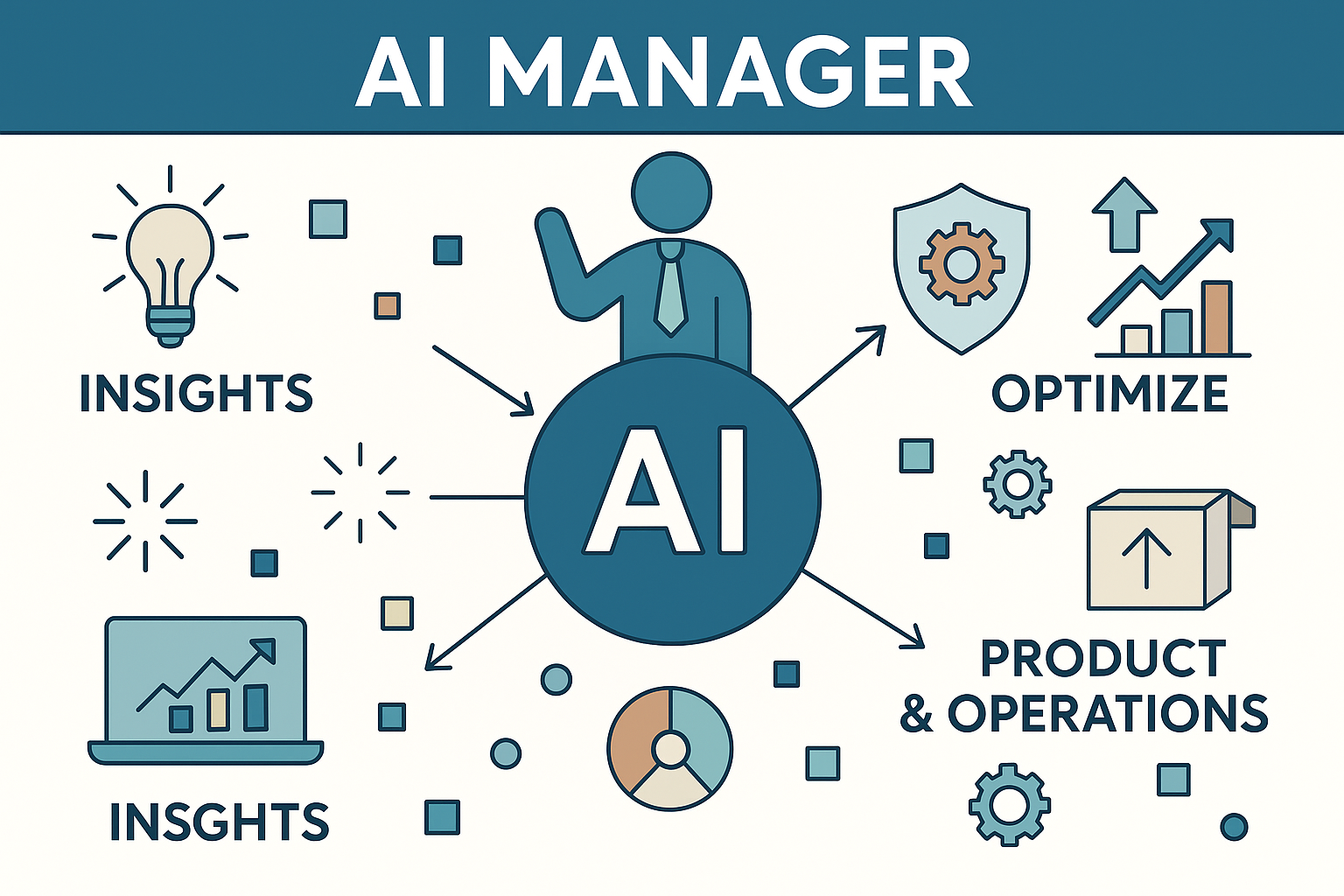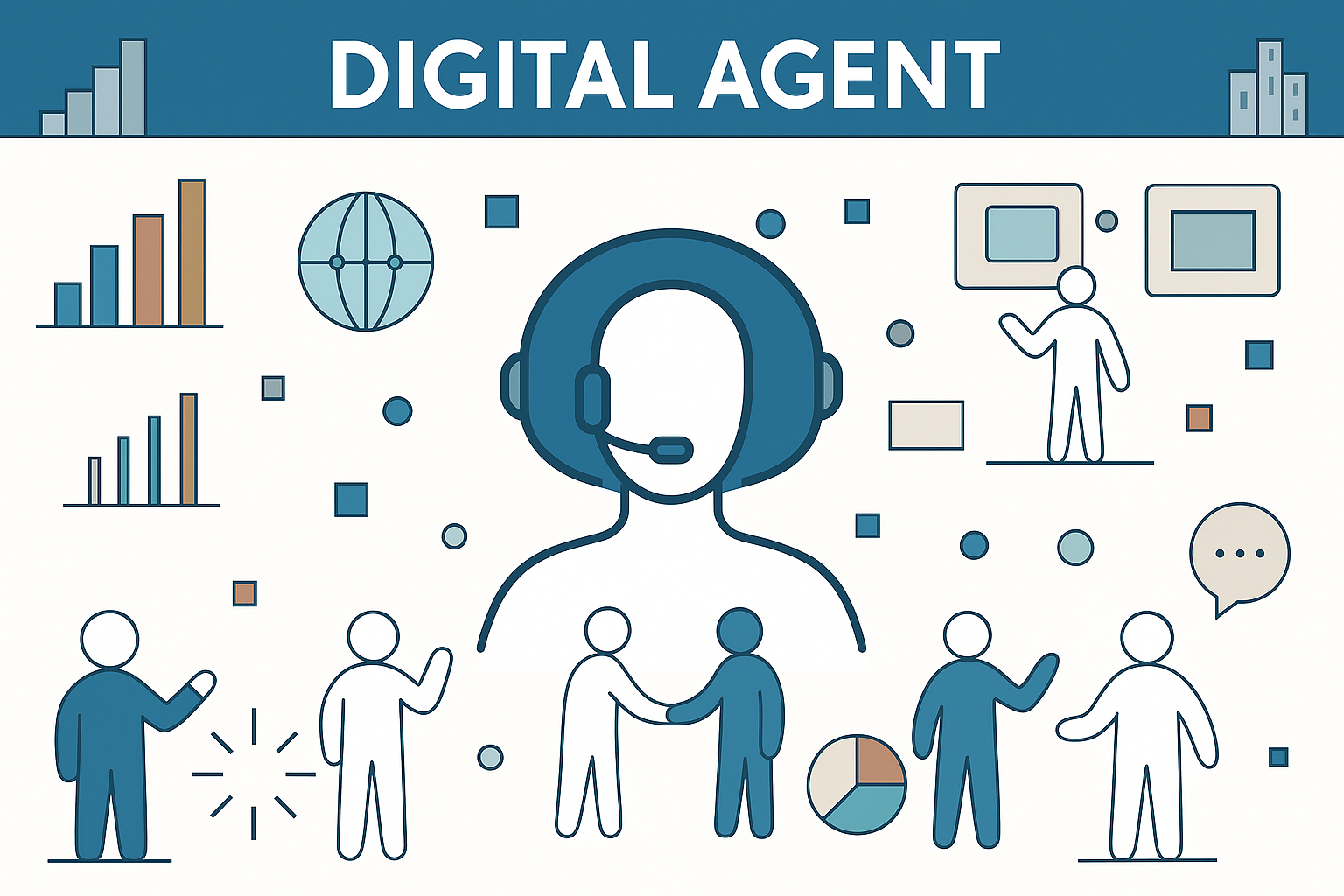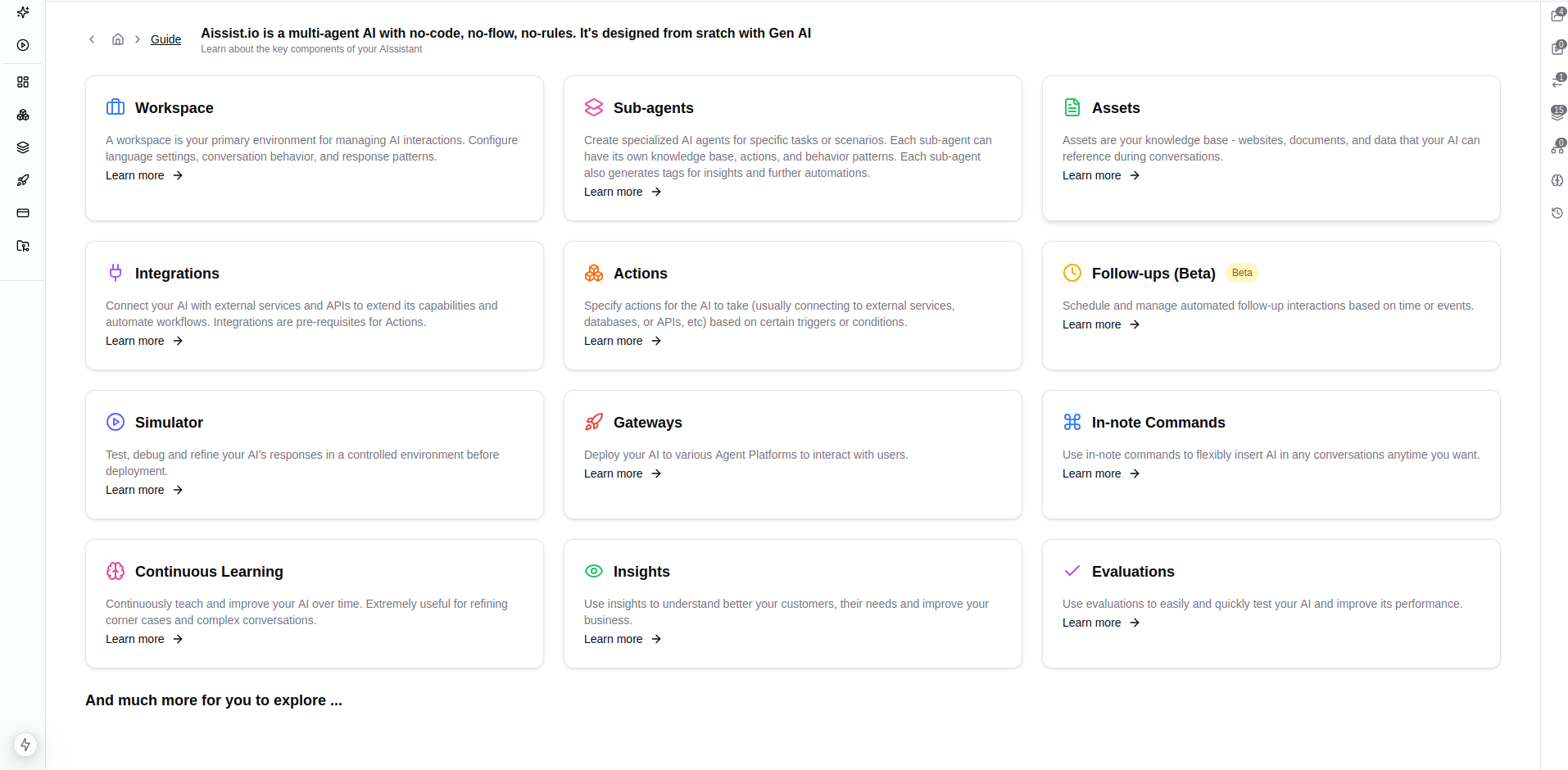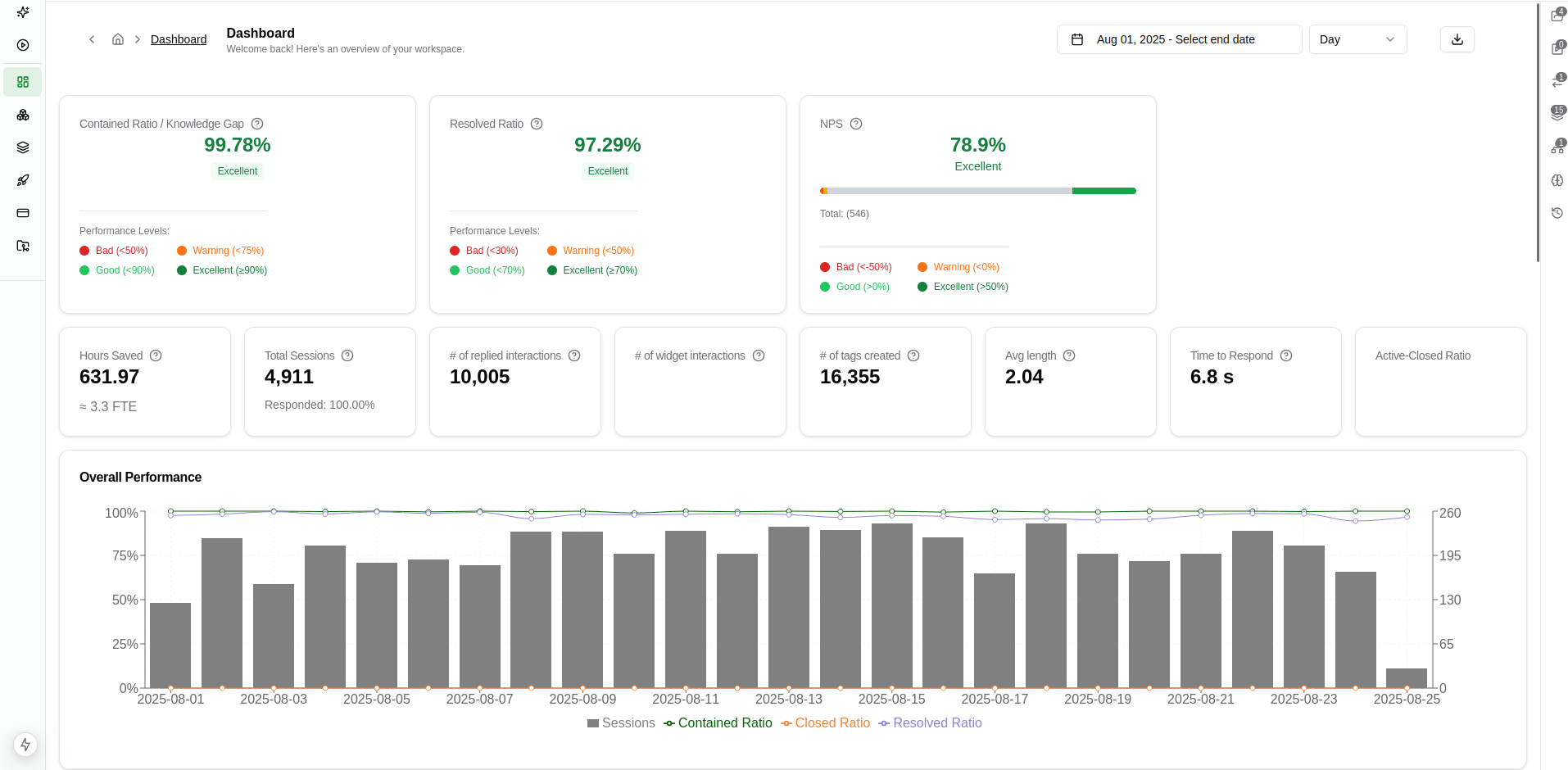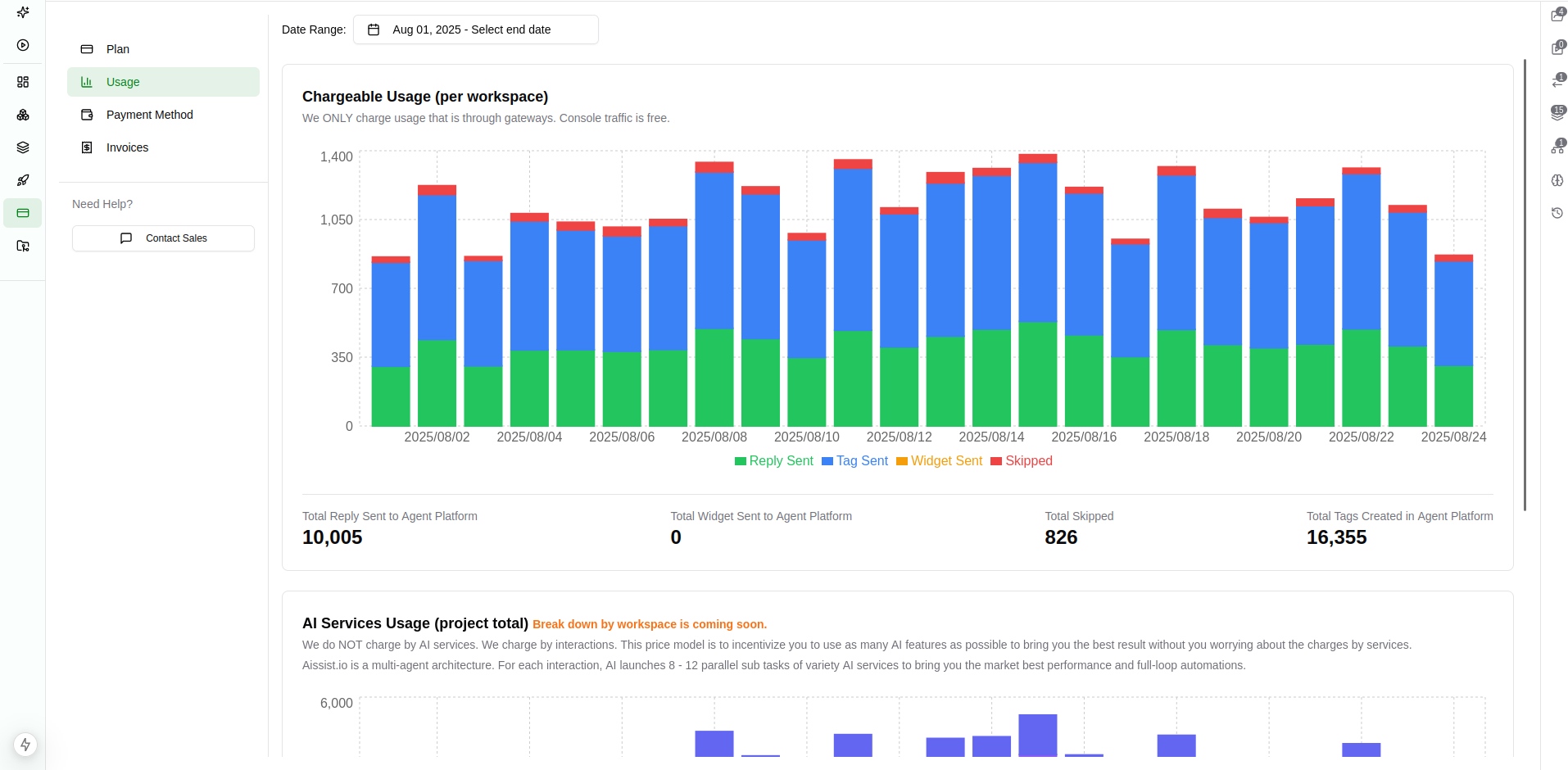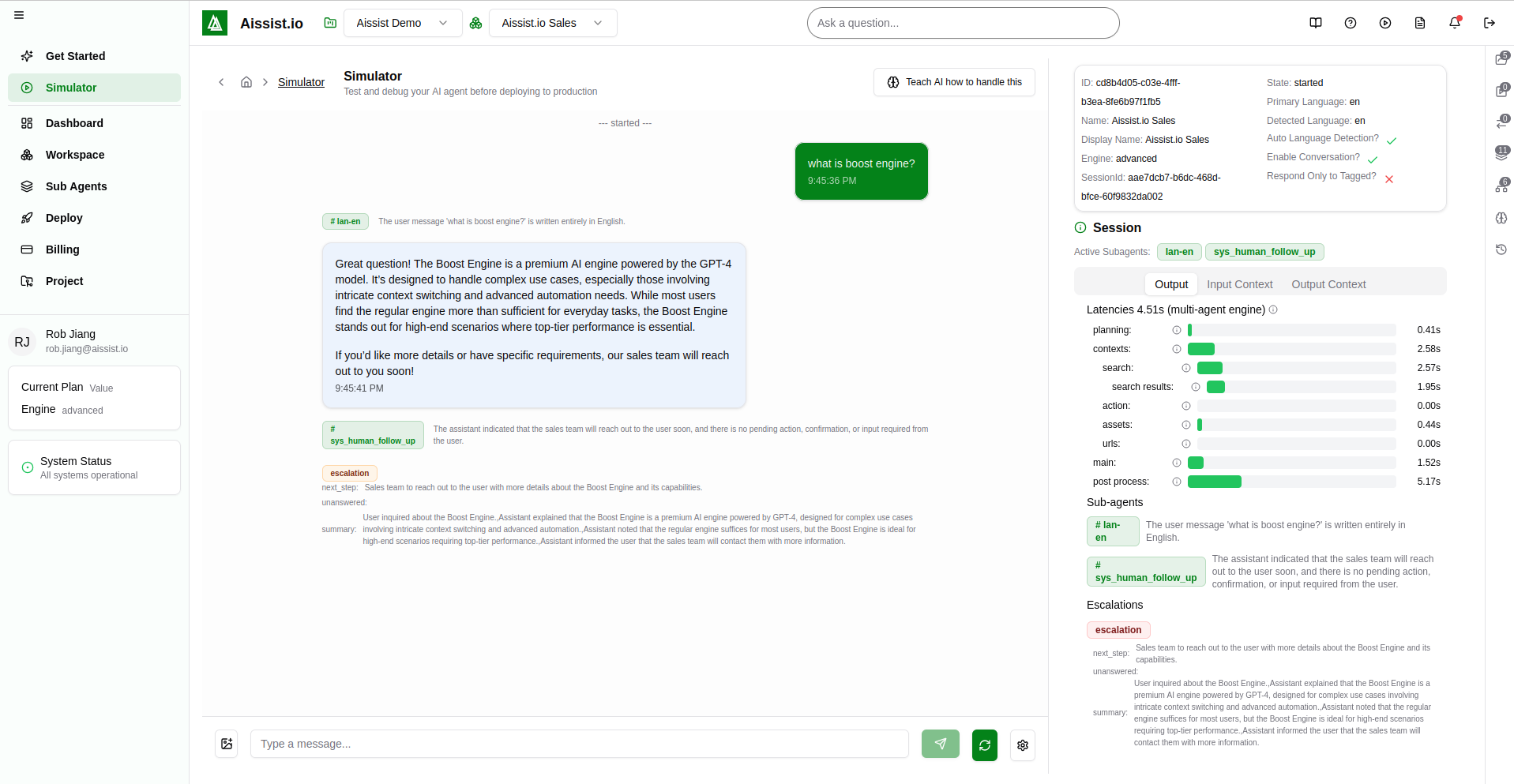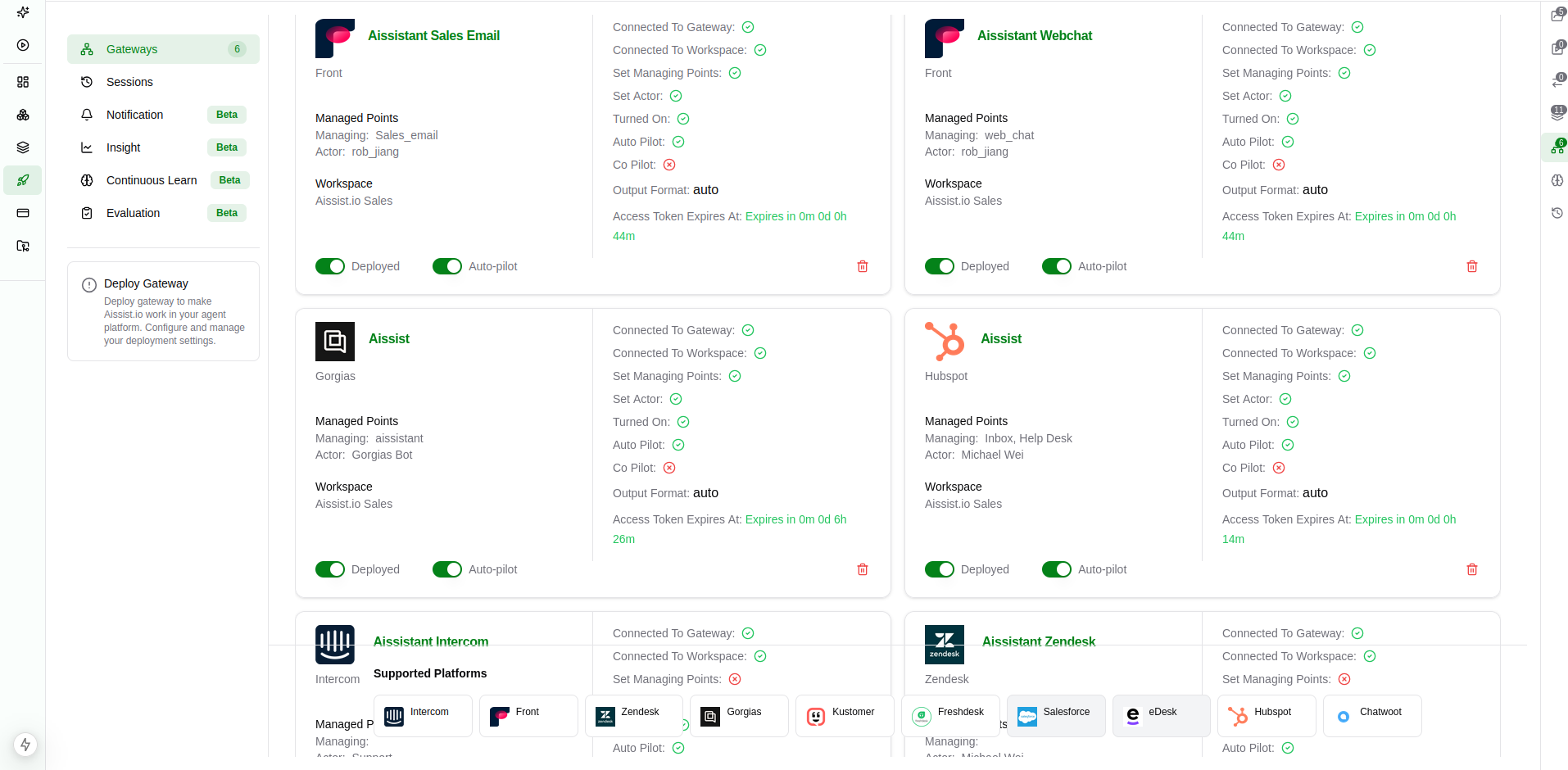As AI becomes increasingly accessible and integral to business operations, many companies face a critical decision: should we build our AI capabilities in-house or buy from a trusted provider? The right answer depends on multiple factors — from the complexity of your use case to the strategic importance of AI in your business.
Here’s a detailed breakdown of what to consider:
1. Complexity of the Use Case
If your AI application is relatively simple and well-defined — for example, handling basic customer queries or automating standard tasks — building in-house can be a viable option. Today’s AI platforms offer easy-to-use APIs, reducing the technical barriers to entry compared to just a few years ago.
However, complexity scales fast. Getting to 50% automation may be easy, but moving from 50% to 80% or higher is exponentially harder. That’s where deep experience in AI, system design, and integration is needed. Building for these more advanced scenarios is not just about writing snippets of code — it’s about making AI work reliably in real-world operations. If your use case involves high variability, language support, or complex workflows, buying may be the smarter path.
2. Total Cost of Ownership
When buying AI solutions, pricing is usually straightforward — typically a subscription or usage-based fee. The provider manages everything from infrastructure to optimization.
On the other hand, building in-house incurs a more complex cost structure. This includes:
- Initial R&D and prototype development
- Integration and testing
- Ongoing API usage (e.g., LLM and search, at least)
- Maintenance and incident response
- Continuous development to support new capabilities
These hidden and long-term costs often exceed initial expectations, especially if reliability and scalability are key concerns.
3. Reliability Requirements
The more critical AI is to your day-to-day operations, the higher the bar for performance and reliability. If your business can tolerate some downtime or inconsistencies, or if you have an experienced technical team in place, building might still be an option. However, if reliability is non-negotiable — for instance, in customer service, fraud detection, or real-time operations — it is often safer to buy from a provider that offers service-level guarantees, expertise support, and proven infrastructure.
4. Keeping Up with the Pace of AI
AI is evolving rapidly. What looks state-of-the-art today could become obsolete within months. If you choose to build, you must be prepared to invest continuously — not only in maintaining what you’ve built but also in adopting the latest innovations and architectural upgrades. This requires a dedicated team and sustained investment. If you’d rather focus your resources on your core business, buying from a provider who actively evolves their product with the latest research may be the better route.
5. Strategic Importance of AI to Your Business
Finally, ask yourself: Is AI central to your company’s core value proposition? If AI is a critical differentiator or major source of value, then owning and building your own system might make strategic sense. But if AI is a supporting function that enables, rather than defines, your business model, buying will allow you to move faster and stay focused.
Summary: Build vs. Buy Comparison
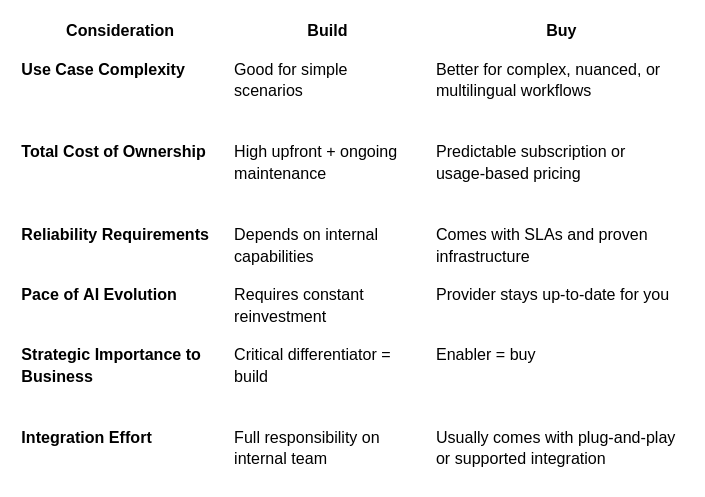
If you decide to buy, consider Aissist.io as your partner. sales@aissist.io
